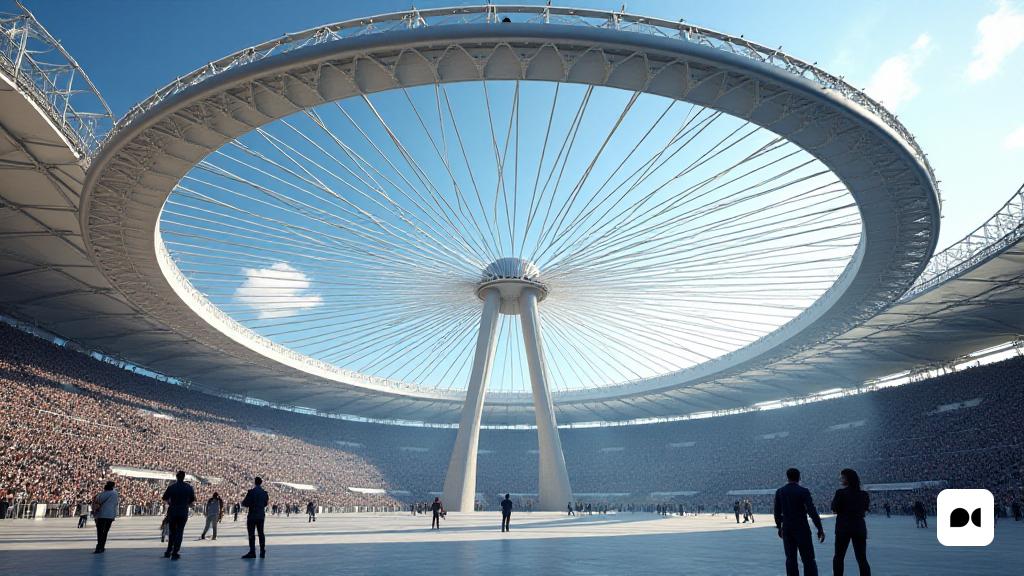A significant breakthrough in structural engineering
A team of researchers at Rovira i Virgili University (URV) has reached a significant milestone in the design of architectural structures, presenting an innovative calculation method for non -circular roofs. This new technique, which can be applied in stages and other large buildings, addresses the design of roofs that mimic the shape of a bicycle wheel, but without maintaining its circular geometry.
Challenges in the design of structures
In the world of architecture, especially in high -capacity spaces such as sports stages, the creation of roofs is one of the great challenges. The need to maintain clear visibility and an open space forces designers to distance the supports, which conditions the entire project, from materials to aesthetics.
Existing solutions and their limitations
One of the traditional solutions is the wheel -shaped cover, which consists of two radii -connected rings. This structure is light and uses less material than other conventional designs. However, its construction is complex and requires great precision, as the stability of the structure depends on the proper tension of the radii.
A new perspective: Triangulation of radii
The URV’s research group has introduced an innovative approach through the triangulation of the radii, thus improving the stability during the assembly. This technique, however, presents a considerable mathematical challenge: each radius must be accurately stressed to ensure the desired shape of the cover.
The iterative design process
To solve this challenge, researchers developed an iterative method that begins with an initial approach and adjusts hundreds of variables to the ideal solution. Rodrigo Martín, a professor of architecture, emphasizes the importance of defining a good starting point, since it is essential for the proper functioning of the method.
International and future recognition of structural design
His research has been recognized with the prestigious Tsuboi Award, awarded by the International Association for Shell and Spatial Structures (IASS), which celebrates excellence in structural design. Blas Herrera, one of the authors of the study, expresses that thanks to this new method, architects and engineers will be able to design non -circular roofs more easily.
As technology progresses, this innovative method is likely to open new possibilities in the field of architecture, facilitating the creation of more complex and efficient structures that can transform the landscape of modern construction.

